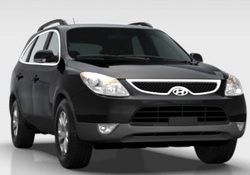 Hyundai’s website had a “build your own vehicle” (“BYO”) feature and a parts catalogue feature. The BYO feature allowed users to build their own vehicle by responding to choices on a menu, including color, pricing, engine, options, etc. Orion IP, LLC sued Hyundai for infringing a patented method for generating customized product proposals for potential customers of an automobile dealer (U.S. Patent Nos. 5,615,342 and 5,367,627). Hyundai sought a defense under its commercial general liability policies, which was denied. Hyundai lost at trial and the jury awarded $34 million in damages to Orion.
Hyundai’s website had a “build your own vehicle” (“BYO”) feature and a parts catalogue feature. The BYO feature allowed users to build their own vehicle by responding to choices on a menu, including color, pricing, engine, options, etc. Orion IP, LLC sued Hyundai for infringing a patented method for generating customized product proposals for potential customers of an automobile dealer (U.S. Patent Nos. 5,615,342 and 5,367,627). Hyundai sought a defense under its commercial general liability policies, which was denied. Hyundai lost at trial and the jury awarded $34 million in damages to Orion.
Hyundai then sued its insurers National Union Fire Insurance and American Home Assurance Company in the Central District of California, where it lost on summary judgment because the district court ruled that patent infringement did not constitute “advertising injury” and was not covered under the liability policies. Further, the district court held that Hyundai was “unable to demonstrate a causal connection between its advertising[] and Orion’s alleged injury.”
The California Supreme Court has specified three required elements to establish a duty to defend for an “advertising injury” claim:
[I]n order for [Hyundai] to have a reasonable expectation of coverage under [Defendants’] policy for “advertising injury” [it] must show that: (1) [it] was engaged in “advertising” during the policy period when the alleged “advertising injury” occurred; (2) [Orion’s] allegations created a potential for liability under one of the covered offenses (i.e., misappropriation of advertising ideas); and (3) a causal connection existed between the alleged injury and the “advertising.”
There was no dispute whether the advertising occurred during the policy period. The Court found that Orion had alleged “advertising injury” in that Hyundai’s BYO feature constituted “marketing methods, marketing systems” that fit within the definition of advertising.
The Ninth Circuit then determined that Orion’s patent infringement claim constituted a “misappropriation of advertising ideas.”
Orion patented a method of displaying information to the public at large for the purpose of facilitating sales, i.e., a method of advertising. And Orion’s complaint alleged that Hyundai violated that method patent by using the patented techniques as part of its own “marketing method” or “marketing system.” In other words, Orion patented a “process or invention which could reasonably be considered an ‘advertising idea,’ ” Mez, 90 Cal. Rptr. 2d at 733, and Orion “allege[d] violation of a method patent involving advertising ideas,” Homedics, 315 F.3d at 1141. “In the context of the facts and circumstances of this case,” Mez, 90 Cal. Rptr. 2d at 733, Orion’s patent infringement claim alleged the “misappropriation of advertising ideas.”
With the final “causal connection” factor, there must be a link between the advertisement and the alleged advertising injury. Here, the Court analyzed whether the advertising itself caused the injury – where there is coverage, or the advertising merely displayed an infringing product – where there is no coverage.
Here, the use of the BYO feature in the website is itself an infringement of the patent because it is the use of the BYO feature that violates the patent (and not the design of the car, for instance, or the method of manufacturing the car, or the car’s engine, or anything related to the car for sale). Furthermore, and critically, it is that use that caused the injuries alleged by Orion. See Orion’s complaint (“Hyundai has been and now is directly infringing . . . the ‘342 patent . . . by, among other things, methods practiced on its various websites . . . using . . . marketing methods [and] marketing systems . . . covered by one or more claims of the ‘342 patent to the injury of Orion.”). Accordingly, there is a direct causal connection between the advertisement (i.e., the use of the BYO feature on the website) and the advertising injury (i.e., the patent infringement). Because the use of the patented method was itself an advertisement that caused the injuries alleged in the third-party complaint, Hyundai has established the requisite causal connection.
Thus, the Court reversed the district court’s grant of summary judgment to the insurers on all claims, and instructed the district court to grant summary judgment to Hyundai on its duty to defend cause of action and to conduct further proceedings on Hyundai’s three other claims. The case is Hyundai Motor America v. National Fire Insurance Company, Case No. 08-56527 (9th Cir. 2010). Copy of the ruling is here.
 Los Angeles Intellectual Property Trademark Attorney Blog
Los Angeles Intellectual Property Trademark Attorney Blog

